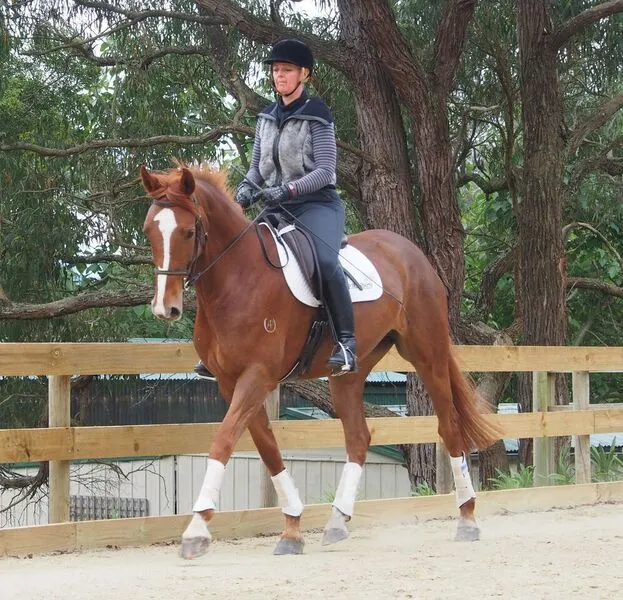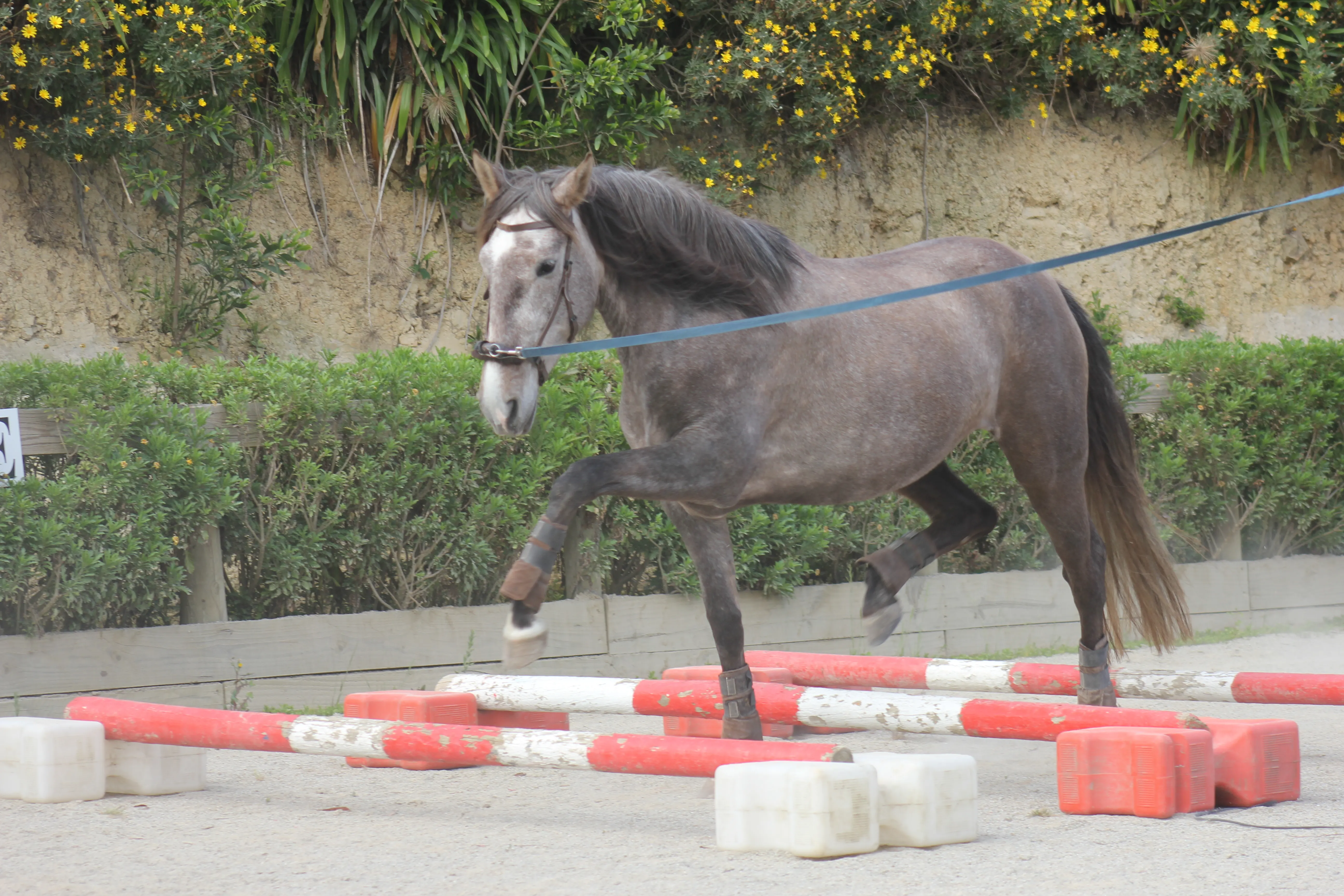Why Shoulder Symmetry Matters for Performance Horses: Preventing Injuries and Building Balance
When we think about building a strong, capable performance horse, most riders focus on fitness, suppleness, and strength. But there’s one factor that often gets overlooked in early training — shoulder symmetry. It’s not just about aesthetics; it’s about biomechanics, soundness and long-term success in any discipline, whether it’s dressage, show jumping, or eventing.
A horse that’s uneven through the shoulders struggles to move straight, carry weight correctly, and stay sound under pressure. This blog explains why shoulder balance is crucial, how asymmetry can impact performance and practical ways to develop better balance and stability before heavy work begins.

What is Shoulder Symmetry and Why Does It Matter?
Shoulder symmetry refers to the horse having equal strength, flexibility, and range of motion on both sides of the body. In a symmetrical horse, the shoulders share the workload evenly, allowing for straight movement, correct posture and efficient energy use.
However, just like people, horses are naturally crooked. One shoulder tends to be more contracted, while the other compensates. If left uncorrected, this imbalance leads to:
- Uneven loading on joints and bones, which can cause long-term wear.
- Increased risk of tendon and ligament injuries, particularly in the front legs.
- Shortened stride and loss of impulsion, which affects dressage marks, jump distances, and overall performance.
- Difficulty in lateral work or collected movements, because one side is stiffer.
For performance horses, balance is everything. Whether you’re asking for a supple half-pass or a powerful take-off at a fence, uneven shoulders limit your horse’s ability to perform without strain.
How Shoulder Imbalance Develops
Most horses develop asymmetry early in life because of:
- Natural crookedness — every horse has a dominant side.
- One-sided handling — leading, lunging, and mounting from the same side reinforces the imbalance.
- Rushed early education — skipping foundational work leads to compensatory patterns that become ingrained over time.
- By the time a horse starts heavier training, the crookedness is harder to correct and puts extra strain on the musculoskeletal system.
The Risks of Ignoring Shoulder Balance
If shoulder symmetry isn’t addressed early, you’re setting the horse up for:
- Uneven muscle development — one shoulder bulks up while the other remains tight and contracted.
- Joint stress — the overloaded side absorbs more concussion, increasing the risk of arthritis or joint degeneration.
- Soft tissue strain — tendons and ligaments work unevenly, leading to repetitive stress injuries.
- Compromised performance — difficulty with straightness, engagement and rhythm.
In short, it’s not just a training issue — it’s a soundness issue.
When Should You Start Addressing It?
The best time to correct crookedness is before it becomes a problem. Ideally, you start when the horse is young, even before backing. But it’s never too late to improve posture and balance.
For performance horses, focus on this during:
- Early groundwork
- Lunging and long reining
- Initial ridden work
The earlier you address it, the easier it is to create a horse that moves straight, develops correct muscle patterns and can handle advanced work without strain.

How to Develop Shoulder Symmetry in Performance Horses
Correcting asymmetry requires deliberate, systematic work, not just riding around the arena.
Here are key strategies:
1. In-Hand Work: The Foundation for Straightness
- In-hand exercises are one of the most effective ways to improve posture and shoulder alignment without the weight of a rider. Work on:
- Yielding the shoulders and hindquarters to teach flexibility.
- Small lateral steps to release the contracted side.
- Backing up straight, which strengthens the core and helps engage the thoracic sling.
Benefits:
Improves body awareness and straightness.
Builds correct muscle patterns before ridden work.
Encourages relaxation, which helps prevent bracing.
2. Lunging with a Cavesson: Correct Frame and Engagement
- Lunging isn’t just for blowing off steam — when done correctly, it’s a powerful tool for balance and symmetry. Using a cavesson (not a harsh bit) and proper side rein adjustment can help:
- Encourage even bend on both reins.
- Promote stretching forward and down for correct topline development.
- Build rhythm, suppleness, and core strength.
Tip: Avoid endless circles; incorporate transitions and changes of rein to challenge both sides equally.
3. Walk Treadmill Work (If Available)
A controlled treadmill program at the walk or slow trot stage can be very effective. It provides a consistent, level surface and forces the horse to move straight without the influence of the rider.
Benefits:
Builds strength evenly through both shoulders.
Improves core engagement.
Reduces concussion on joints compared to uneven ground.
4. Pole and Cavalletti Work for Shoulder Freedom
Once the horse has developed better symmetry, introduce pole work and cavalletti at walk and trot.
These exercises:
- Encourage lifting through the shoulders.
- Improve range of motion and stride length.
- Develop coordination and rhythm.
For dressage horses, this builds the freedom needed for expressive movement. For jumpers and eventers, it improves bascule and take-off power.

The Payoff:
Soundness, Strength and Better Performance
When you take the time to create shoulder symmetry, you’re setting your horse up for:
- Improved balance and straightness, which makes lateral work easier.
- Stronger, healthier joints and soft tissues, reducing the risk of injury.
- Better performance scores, thanks to rhythm and expression.
- Longevity in the sport, because the horse can handle the demands of training and competition.
Final Thoughts
Shoulder symmetry isn’t just about looks — it’s about biomechanics and soundness. Correcting asymmetry early (and maintaining it throughout training) is essential for a strong, supple and injury-free performance horse.
Start from the ground. Use in-hand work, purposeful lunging, and if possible, treadmill sessions before moving into advanced pole and cavalletti exercises. Small steps now will pay off in better performance, fewer injuries and a happier horse.
